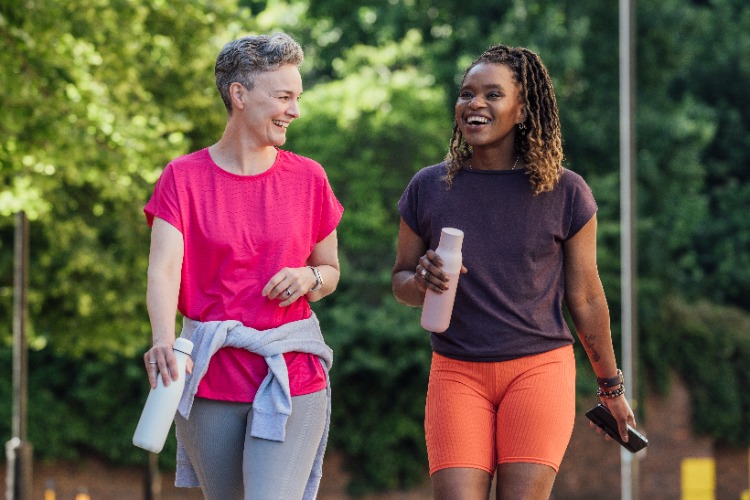Simple ways to sit less and move more
Published by HealthFitness on April 10th, 2025
You hear about the benefits of regular exercise all the time. It’s good for your heart and helps prevent type 2 diabetes and other chronic health problems. It may help to elevate your mood and make you feel great. It’s true that exercise can do many things for our health. But did you know that there is something else you can do that is JUST as important as regular exercise.

A Sedentary Lifestyle
A growing number of studies show that even our best efforts to exercise might be unraveled by something many of us spend hours doing each day—sitting. Do you have a job that keeps you connected to your desk or phone all day? Do you spend a lot of time driving, watching TV or playing video games? Do you ever step away from your desk or workstation for a break during the day? Although modern conveniences are great for saving time and energy, they also take a lot of movement out of our days. Many things are so convenient that we rarely need to get up and move.
The Dangers of Sitting
The message has long been to make sure you get regular exercise (such as brisk walking) throughout the week. However, new research is beginning to show just how risky long periods of sitting can be.
A study by the National Institutes of Health found that spending more time sitting was linked to higher risks of heart disease and cancer. This was especially true for those who spent more time watching television.
Those who watched TV for seven hours or more each day had a 60 percent higher risk of death from all causes, compared to people who watched less than one hour of TV each day. Even people who exercised often—as much as four to seven hours per week—had a higher risk of death if they spent five to six hours per day watching television.
Another study found that breaking up sitting may help lower blood glucose and insulin levels for adults who are overweight or obese. This may help to reduce the risk of diabetes and heart disease. More research will help us understand why prolonged sitting increases risk. In the meantime, breaking up sitting is a wise (and easy) move for all of us.
Sit Less, Move More
While exercising regularly is still important to good health, breaking up sitting throughout the day is a simple step you can start now! First, think about the parts of the day that you are sitting for long periods of time—anything longer than 30 to 60 minutes. Then, just get up and move for one or two minutes for each 30- to 60-minute block of prolonged sitting. For example, stand up for a couple of minutes when you’ve been sitting for a while.
Yes, it’s that easy! Here are some other ideas to try:
- Stand up, walk in place, or pace while talking on the phone
- Set a reminder in your calendar to get up and move every 30 to 60 minutes
- Walk over to talk with a co-worker instead of calling or emailing
- Take breaks to stand up during long meetings—stretch your arms overhead; shake out your legs
- Step away from your workstation to fill your water glass
- Drink water throughout the day so you need to get up for regular bathroom breaks
- Invite a coworker to a walking meeting instead of meeting in a conference room
- Break up long drives by stopping at a park or wayside to get up and move around
- Elevate your workstation and stand for part of your workday (be sure to wear comfortable shoes and stand on a mat to reduce strain on your legs and back)
- Keep a tally each time you get up and move—and set a goal to strive for more
It’s still important to include regular physical activity in your routine, too. Aim for at least 150 minutes of moderate-intensity physical activity spread throughout the week.* This is the type of activity where you can talk comfortably, but not sing the words to your favorite song. But remember, those small movements throughout the day are just as important—and may even contribute to a longer, healthier life!
*Remember to check with your doctor before starting or increasing exercise if you have diabetes or any disease of the heart or lungs, high blood pressure, any history of chest pain, breathing problems, or shortness of breath, dizziness, swelling in your ankles, bone or joint problems, unusual tiredness, or if it’s been a while since you’ve been active. Pregnant women should also talk with a doctor before increasing physical activity.
Sources: National Institutes of Health; National Cancer Institute; American Diabetes Association